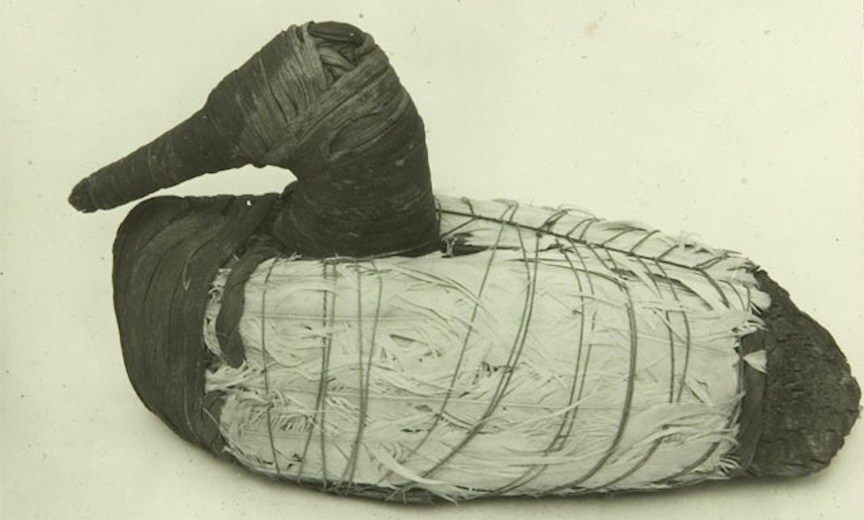For two thousand years, the canvasback has been sought after for its tasty, flavorful meat
The canvasback duck has a longtime association of being referred to as the King of Ducks. In appearance the canvasback possesses a regal and noble aspect. Its large yet sleek body is elegant as it wisps through the air. With its head held high and almost dusty white feathers along its back and sides, early English settlers along the Atlantic coast named the male duck “canvasback” as it resembled white canvas fabric. Duck hunters refer to the prized diver duck as “King Can” or simply “Can.”
I wonder if things would have been different, as far as naming the duck, if the settlers would have eaten a canvasback first. During that period along the Atlantic Flyway canvasbacks were drawn to the coast for the wild celery that flourished. Wild celery, also referred to as water-celery or tape grass, grows underwater and is a favorite food of the canvasback. In fact, the canvasback’s species name comes from the aquatic plant, Vallisneria americana. Canvasbacks feast on the roots and seeds of this native plant. Diet determines flavor. In the case of the canvasback, wild celery is consumed in such quantity that it literally changes the flavor of the duck to a delicate, celery-like taste to it. “King Can” very well could have been named the Celery Duck after the settlers finished feasting on a couple of them. The name would not have changed the regal qualities of the canvasback, and it doesn’t sound all that bad.
Historically the canvasback has been regarded to as the one of the tastiest gamebirds. So much that as with any popular gamebird that was singled-out, market hunting in the 19th century got wind of the tasty celery-like meat and untold numbers of canvasbacks ended up as table fare and on menus throughout the country. People couldn’t get enough of the duck’s reddish meat, layered blushing-color skin, and ivory-colored fat. To order canvasback was prestigious.
Ancient canvasback duck hunters
One can go even further back in history to over two-thousand years ago to see the canvasback was very much sought after for its meat. We must travel to present-day Nevada to unearth almost a dozen decoys discovered in 1924 to make the canvasback connection.
During an excavation of Lovelock Cave on behalf of the National Museum of the American Indian, archeologists discovered a storage pit that revealed clearly what appeared to be waterfowl decoy bag of sorts. Unearthed was a cattail woven basket, and inside were eleven near-perfect preserved canvasback duck decoys.

The handmade dekes had been fashioned from woven tule (TOO-lee) reeds, painted with soot and red ochre, and adorned with real feathers to give the decoys a life-like appearance. Two of the decoys were unadorned and lacked color. Archeologists believe these represented female canvasbacks as they bobbed along the drakes on the marsh luring flocks of Cans into the spread.
The decoys were ancient works of art, craftsmanship that would make any modern-day decoy carver envious. The decoys were subjected to carbon dating and accelerator mass spectrometry (AMS) tests, in which the decoys proved to be about 2,000 years old – easily making them the oldest decoys ever discovered!
The hunters that wove these canvasback decoys were ancient Tule Eater Indians – early ancestors of modern-day Northern Paiutes. Much like modern duck hunters, the Tule Eaters used bows and arrows to hunt over decoys. However, in the early morning hours the hunters would also deploy vast nets across marshes and other bodies of water to capture ducks. These web-like nets would be hard for incoming ducks to see under low light conditions, soon finding themselves entangled. It was a very effective method of hunting. The reed and feather decoys were the demise of incoming flocks.
The archeologists were able to answer many questions; however, I want to know why canvasback decoys, specifically? A current waterfowl migration map shows Nevada would indeed have been in the flyway. But why canvasbacks? Other types of ducks would have flown through and probably just as easily decoyed in when they saw the woven tule dekes. Was it that when canvasbacks were caught in the nets or killed with an arrow, the King of Ducks were the most sought-after duck due to their delicious flavor? Wild celery would have flourished and been a staple for migrating canvasbacks there, as well.
I will go as far as to hypothesize that the Tule Eaters handcrafted canvasback decoys to honor their favorite duck to eat. It is a far stretch but as a duck hunter the idea makes perfect sense.
Connecting with the past through modern day canvasback hunting
I for one will look forward to the day that I am able to shoot a canvasback duck or two and cook them with a side of jelly sauce, wild rice, potatoes, and a couple of stalks of celery for garnish and nibbling. The meat’s rich flavor with hints of celery will be a welcome taste to savor.
It will connect me with the long history this majestic duck has within our country, from pioneering settlers to the native people of the Tule Eater tribe. I like the name “Celery Duck,” and when the time comes when I am in the duck blind and see a flock of canvasbacks coming in, I will whisper “Celery Ducks coming in fast, get ready.”
Sources
E Decoy. 2020. The Lovelock Cave Decoys. Accessed at: https://edecoy.org/locklove.html
National Audubon Society. 2020. Guide to North American Birds. Accessed at: https://www.audubon.org/field-guide/bird/canvasback
Last modified: July 19, 2022










































![Air gun 101: The differences between .177 & .22 – Which jobs they do best ? [Infographic]](https://airgunmaniac.com/wp-content/uploads/2020/09/g44-150x150.jpg)
